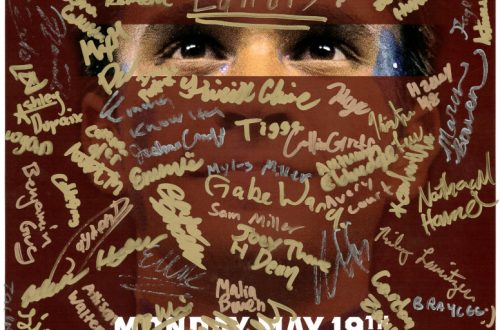This post concludes my essay on writing what I believe and writing what I love. In the first part I explained that it includes reading what I love, and that includes long novels. In the second part I wrote of hope and of young people who restore my hope. This concluding part touches on my reasons for choosing to write what I write, with thoughts about my audience and what it is that I am writing.
Writing My First Novel
Something else happened in those months of filmmaking, which has directly influenced my aspirations as a writer. May I hazard another metaphor? (I can hear you saying, “Not if you’re asking permission first.” Forsooth.)
I used to prefer watching high school marching band performances from high in the stadium, where patterns and formations are clear. In making that film, I learned to prefer a closer view. Now I want to be in the front row, if they won’t let me on the sideline. I like to watch individual performers, and I think I’ve figured out why.
Hidden in Plain View
In helping to make that film, I peered behind the scenes for months, firsthand and by watching many hours of raw video footage. I discussed the marching band experience at length with dozens of students, parents, and staff, mostly one at a time. I asked ninth graders and seniors alike why they joined the band and why they stayed in it when the marching got rough. I recalled my own band experience (though darkly, through the glass of decades). And I spent hours and hours with a couple of talented filmmakers, as we tried to do justice to it all in 80-plus minutes of sights and sound and words.
You can watch our film if you wish; I still enjoy it. But the hours of interviews we left on the cutting room floor affected me as much as the fragments we could include.
In that process I learned to see beauties beneath and behind (if they are not actually not beside or before) the visual and musical beauty of the show. True, each person’s performance is part of the whole, and great effort goes into uniformity of appearance, movement, and sound. But these youth are more than cogs in a machine, if you approach closely enough and watch them long enough and strive to have eyes to see.
Behind each moment of each person’s performance are thoughts and emotions both expressed and suppressed, for the sake of the show. In each performer there is a unique mix of struggles, aspirations, fears, hopes, loves, joys, and pains. These, in turn, are the iceberg’s tip of a personality, a life, a soul. Some of this each musician or dancer has in common with all the other performers, even the audience, but much is unique. That individual part will go unappreciated until we watch and listen long enough and deeply enough to begin to see it. This seems to be true of humanity in general.
It’s fine with me that other writers make different choices. If they probe the thrilling movements of armies and parliaments, fictional or otherwise, and the minds and hearts of people grappling with duty, honor, and the will of God on a global or even cosmic scale, I’ll enjoy their books. But for now, at least, the writerly thrills I chase are quotidian. It’s also fine with me if others fill their books with the magic of wizards, castles, and all things speculative and paranormal. For my part, I want to tease the magic – and light and darkness – out of ordinary moments.
What I’m Writing
I think there’s hope for my writing, not just for humanity in general. A fellow writer who read my entire novel-in-progress and several shorter tales, the latter now mostly published, wrote of me:
“A lot of writers invent a fake world, maybe because the real world isn’t worthy of them. This writer focuses on the real world and allows the reader to lose herself in the beauty and breathtaking quality of real life. Because real life is beautiful, even if it has rough edges.”
In writing this she was beyond generous. I’m quite certain I haven’t arrived there. But I have begun the journey. She has discerned and described my destination, what I’m trying to do, the writer I want to become.
After all this, you won’t be surprised that my novel-in-progress is mostly about young people who are trying to be good – not in a marching band, but in an everyday, modern religious community where there are conflicting ideas of good. Two teenagers, among others, wrestle with the challenges of fitting into a church and a faith. (These wouldn’t have to be my own church and faith, but they are.) They’ve grown up there, and they’re still committed, but they find that simply fitting in as youth or even adults is not at all like fitting in as children.
They’re in high school, with some first love and coming-of-age things going on, so I could try to sell it as YA fiction. But it’s long enough to be at least two YA novels in the current market, even if it’s shorter than some of the Harry Potter books. And, like some of my shorter fiction about young people, it may resonate better with an older audience. These are problems, if I’m trying to get rich. I’m pretty sure I’m not.
Much of a long novel’s lure for me, as a reader and a writer, is exploring themes, events, and characters deeply and from multiple perspectives. The long novel gives room for an intricate tapestry of contrasting and complementary threads. I tried repeatedly and failed completely to cut my novel into two or three separately meaningful novels without spoiling the tapestry, so . . . long it remains.
Who Is My Audience?
Writers talk about writing to market, writing what the market wants. I wonder if we might more wisely talk of writing to audience. Knowing for whom we write may be more important than knowing what we write. In this first attempt, perhaps I did neither. I wrote my story, leaving the questions of what and for whom until later.
I could call it general fiction, and I probably will. It’s more character-driven than plot-driven. I hope it’s engaging, even entertaining, as we expect of general fiction. But it’s trying to root us more firmly in real life, not simply to provide an escape or a diversion. So I could call it literary fiction.
Or not. The prose is surprisingly simple (if you’ve observed my fondness for big words) and isn’t calculated to draw attention to itself. Moreover, to call my own writing literary would seem like scrawny intellectual chest thumping. (In physical stature I’m not scrawny. But I would feel scrawny.) The word upmarket is out there; maybe I’ll claim it.
I could call it a Latter-day Saint (or Mormon) novel, but it strives to be more. I avoid unexplained inside baseball, and my key themes reach beyond The Church of Jesus Christ of Latter-day Saints and its doctrine and culture, to any religious tradition with a keen sense of divine law and earthly religious authority, such as Catholicism, Islam, and some branches of Judaism. These are not uniquely Mormon questions: Which of the many things I hear at church does God actually expect me to obey? Who gets to decide? What do we do, and how do we treat each other, when we disagree?
Perhaps it’s enough that this book fulfills its role as my novel-laboratory, helping me learn the art, craft, and business of fiction. Its present length disqualifies it from traditional publication in the current market, especially as an unproven author’s first novel. So I intend to self-publish, and I’ve used my two self-published collections of short fiction to learn how. Happily, self-publishing, or indie publishing, has become feasible and even credible, if the product is good.
I hope, through patience, persistence, and a little luck, to collect some avid readers who enjoy and want to share the experience. I’ve already found a few, and the novel isn’t even ready yet. They’re eager to share the crap out of it, so to speak, when it is. I note this with gratitude and a measure of wonder.
How I Know
Meanwhile, here’s how I know I’m writing the book I want to write.
For years this book has been the project I choose in the evening instead of streaming my favorite TV shows on Hulu or Netflix.
During much of the writing I commuted to my day job by train. On the train, at both ends of my workday, I preferred working on it to dozing or anything that felt and paid like work.
This book has taught me – through years – to welcome skilled critiques and celebrate them when they arrive, because I want it to work well.
Even as I have serially remodeled this novel-laboratory of mine, and as I wonder how the book itself will eventually fare, along with two or three sequels for which I have extensive notes and scattered first-draft scenes and dialogue – for now, it feels like I’m getting this writing thing right.
We have come full-circle: I think it feels right because somehow, neither wholly by accident nor fully by conscious design, I find myself writing what I believe and writing what I love. The intersection of these two lines, whoever the author and reader may be, is a magical point indeed. As one of my small city’s founders said some eight score years ago, “I think I would like to live here.”
As to this essay, because we have returned to the beginning, it must be time to end.
Photo credit: Daria Kraplak on Unsplash
From the Author

Thanks for reading!
Comments are always welcome, within the bounds of common civility and relevance. There’s a place for them below. Absolutely no marketing, please.
Subscribe below to receive alerts of new posts by e-email.
If you liked what you read here, please consider sharing. You might consider liking or following my Bendable Light page on Facebook. Or you can follow me (and clap if so moved) on Medium, where I post most of the fiction I post here.
And if you’re interested in my published fiction, check out my two published collections at 60 East Press.




